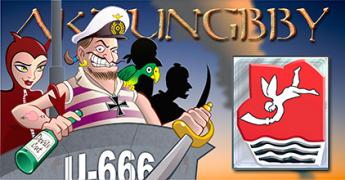 08-22-20, 07:21 PM
08-22-20, 07:21 PM
|
#199
|
|
Gefallen Engel U-666
Join Date: Jul 2013
Location: On a tilted, overheated, overpopulated spinning mudball on Collision course with Andromeda Galaxy
Posts: 27,953
Downloads: 22
Uploads: 0
|

Quote:
Originally Posted by Aktungbby

BIGGER ain't always better: The 747-400 super tanker used in the Pardise and Brazil fires is out of service due to backruptcy issues....just when 'a von Claucsewitzian level 'increase of firepower' is needed to combat the wrath of god. At 20000 gallons per drop, twice the amount of a DC-10, someone needs to get to the boneyard and revamp it. The retardant drops can be fatal to firefighters on the ground though:
|
Quote:
Originally Posted by vienna

This is a link to photos of some other aircraft in the SoCal wildfire fighting arsenal:
Photos of firefighting aircraft on the Elizabeth Fire in southern California --
In regards to the size vs. effectiveness issue, payload can often be a secondary consideration; depending on terrain and extent of a blaze, size of craft can be a liability; larger craft mean greater speeds in flight at the loss of some maneuverability; in mountainous terrain, much larger craft cannot easily maneuver in close enough for pinpoint drops and, dropping retardant from a necessarily higher altitude cause the drops to often miss their mark; smaller aircraft are also better capable of dealing with surprise currents and drafts caused by changing micro-climates caused by the fires and respond with greater ease and safety; additionally, smaller aircraft are more versatile in accessing water sources: a helicopter can hover over nearby lakes, etc., to draw into their tanks and some other small fixed-wing craft can skim over the surfaces of larger lakes to scoop up water for their tanks, while the very large craft often have to land, be filled, and then take off, costing time in firefighting efforts...
Regardless, of the type or size of craft, the efforts of those who fly and maintain the craft is to be greatly appreciated...
<O>
|
Argument duly noted, and well considered as usual but it's dangerous work as a fire-helicoptor pilot has already died this week.This is a matter of increase of firepower especially when the volume of fires exceeds last years' already. All fireplanes miss the mark like any bomber but this bad boy is seriously missing from the fight and I saw it first hand in 2017:
"von Claucsewitzian" Rule 2: ie always increase firepower if possible; and doing the work of six conventional aircraft - is essentially military 'economy of forces' : literally ten fewer pilots and crews. The 747 is a two plane affair with a spotter aircraft leading the way and releasing smoke at the drop point. Even the DC-10 uses a Cessna Citation spotter
Quote:
|
The jet you hear zoom overhead in front of the DC-10 is a Cessna Citation, which is used as a spotting aircraft for the tankers making drop runs. The Citations use smoke to mark the drop spot, or they literally fly the run in front of the tanker in a game of follow the leader.
|
And even the DC-10 with half the payload of the 747, gets a little too close to ridge terrain for comfort: video #1: https://www.thedrive.com/the-war-zone/4551/watch-this-epic-retardant-drop-run-by-a-firefighting-dc-10 Note spotter in video #2; complete with puff of smoke!!
__________________

"Only two things are infinite; The Universe and human squirrelyness; and I'm not too sure about the Universe"
|

|

|